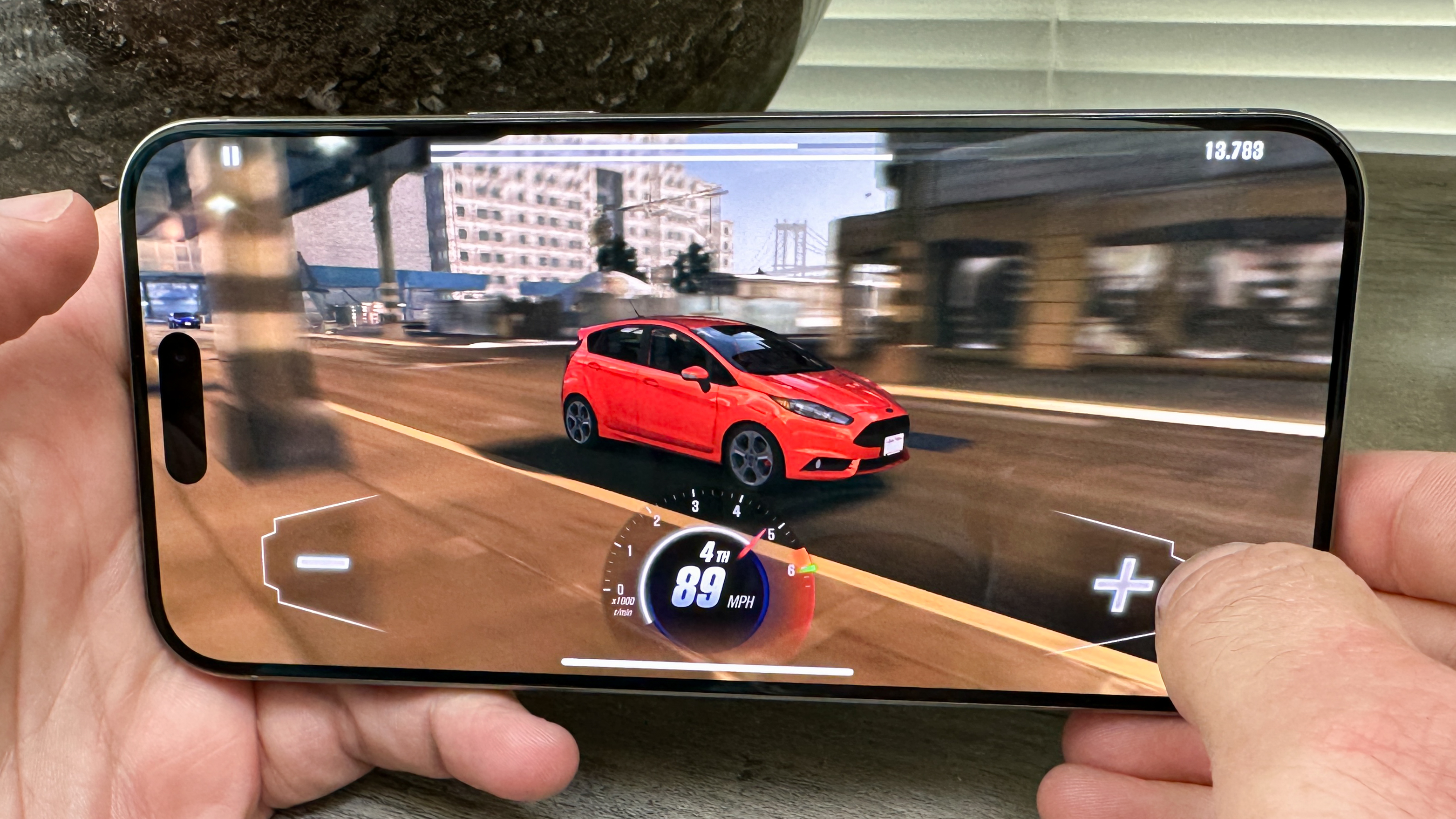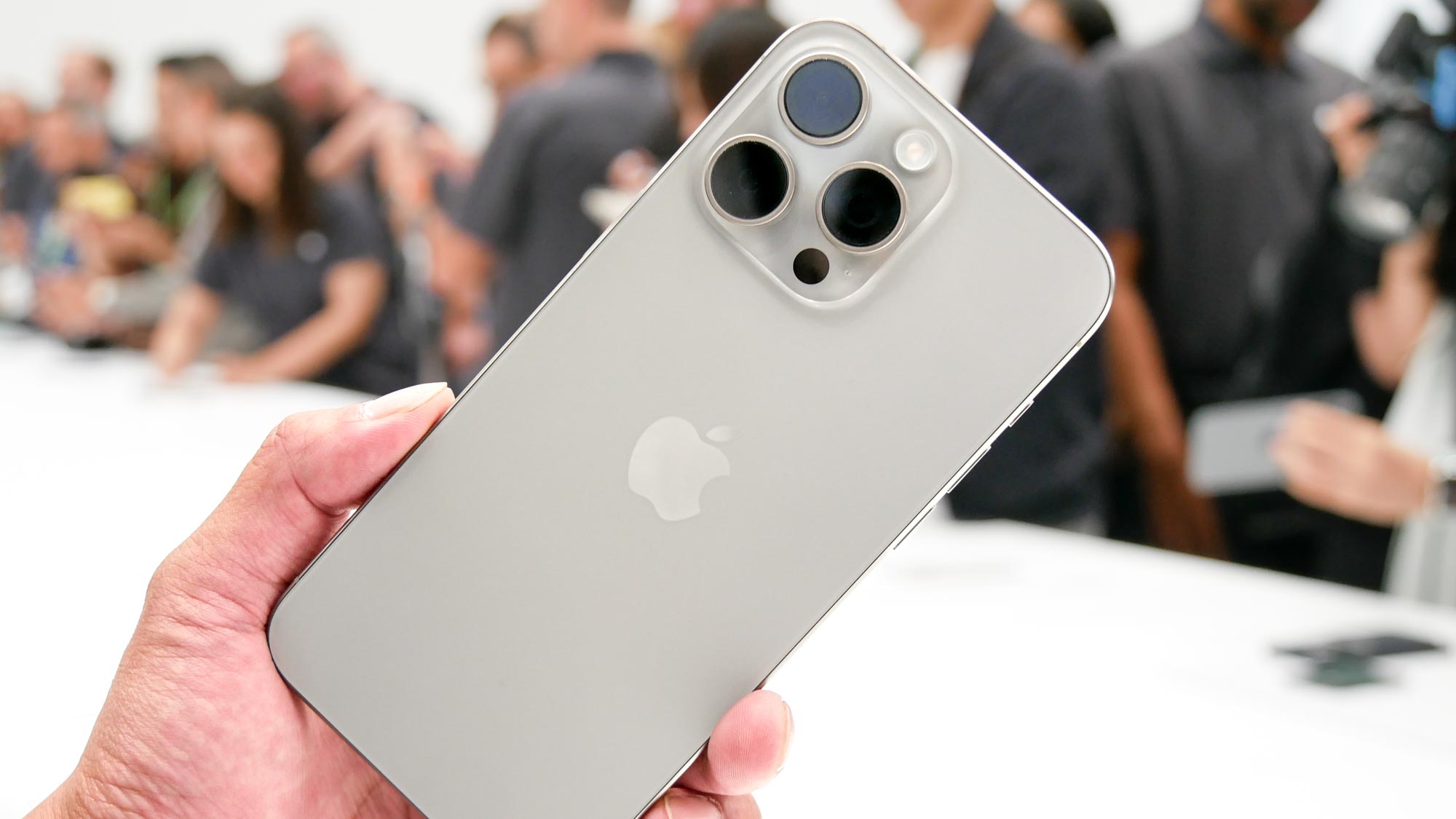iPhone 15 Pro benchmarks are in — A17 Pro just blew away Android
Our testing shows just how advanced the new chip is

iPhone 15 Pro Max
(Image credit: Tom's Guide)Our iPhone 15 Pro and iPhone 15 Pro Max reviews are here, and if you want the lowdown on the power of Apple's A17 Pro chipset we've run several key benchmark tests that we want to share.
Last year's iPhone 14 Pro, with its A16 Bionic chip, is already powerful, but Apple's moved the A17 Pro to a 3-nanometer process, upped the GPU core count and made some other adjustments to make the new chip fly through workloads even faster. Where does that leave the best Android phones that may also be competing to be your next smartphone? We're about to show you.
Thanks to the work of Tom's Guide's testing team, we've got four different benchmarks for the iPhone 15 Pro to show you, along with results for last year's iPhone 14 Pro and for some of the top Android devices on the market right now. The exact winners and losers change depending on the test, but if there's one common theme, it's that the iPhone 15 Pro is way ahead of the competition.
iPhone 15 Pro benchmarks: Geekbench
We start off with Geekbench 6 a CPU test for overall performance. It's designed to show how effective a device performs various tasks either using a single core or all of its cores together.
| Row 0 - Cell 0 | Geekbench 6 Single-core | Geekbench 6 Multi-core |
| iPhone 15 Pro Max | 2,783 | 6,945 |
| iPhone 15 Pro | 2,890 | 7,194 |
| Samsung Galaxy S23 Ultra | 1,578 | 5,081 |
| Google Pixel 7 Pro | 1,060 | 3,046 |
| Asus ROG Phone 7 Ultimate | 1,380 | 4,817 |
| OnePlus 11 | 1,536 | 5,065 |
While recent Android phones like the Samsung Galaxy S23 Ultra, OnePlus 11 and the Asus ROG Phone 7 Ultimate have produced strong scores here, the iPhone 15 Pro and iPhone 15 Pro Max are way out in front on both single-core and multi-core tests.
For example, the iPhone 15 Pro Max is 76% faster in single-core performance and 41% faster in multi-core than the Galaxy S23 Ultra.
Meanwhile, the Google Pixel 7 Pro and its Tensor G2 chipset are a long way behind the rest of the pack. The Pixel 8 and Pixel 8 Pro have some catching up to do.
Sign up to get the BEST of Tom's Guide direct to your inbox.
Get instant access to breaking news, the hottest reviews, great deals and helpful tips.

There's a curious gap between the iPhone 15 Pro and iPhone 15 Pro Max results though, with the smaller of the two phones somehow managing better results. This is likely due to small variations between theoretically identical chipsets, or perhaps differences in cooling, rather than Apple deliberately making its smaller model more powerful.
iPhone 15 Pro benchmarks: 3DMark Wild Life Unlimited
Wild Life is a GPU test that checks how well a device can render complex graphics, for example when playing video games. We have results here both from the standard Wild Life Unlimited test as well as the tougher Wild Life Extreme Unlimited version.
| Row 0 - Cell 0 | 3DMark Wild Life Unlimited | 3DMark Wild Life Extreme Unlimited |
| iPhone 15 Pro Max | 15,399/92fps | 3,481/20fps |
| iPhone 15 Pro | 15,747/94fps | 3,623/21fps |
| iPhone 14 Pro Max | 12,366/74fps | 2,792/16fps |
| iPhone 14 Pro | 12,413/74fps | 3,217/19fps |
| Samsung Galaxy S23 Ultra | 14,611/87fps | 3,788/22fps |
| Google Pixel 7 Pro | 6,725/40fps | 1,805/10fps |
| Asus ROG Phone 7 Ultimate | 14,053/84fps | 3,625/21fps |
| OnePlus 11 | 14,089/84fps | 3,687/22fps |
The best 3DMark results belong to the iPhone 15 Pro and iPhone 15 Pro Max. However, the Galaxy S23 Ultra, followed closely by the OnePlus 11, score best in the Extreme test. This could prove a crucial crack in the iPhone 15 Pro's armor, especially since Apple's touting AAA gaming experiences with the A17 Pro chipset.
Overall, though, these results are much more closely-packed than the CPU benchmarks were. Except for the poor Google Pixel 7 Pro.
iPhone 15 Pro benchmarks: Geekbench ML
As the name suggests, the Geekbench ML test sees how well the phones' fulfill machine learning tasks. The new iPhones all have dedicated NPUs (neural processing unit), and Apple claims that the A17 Pro chip offers up to 2x faster machine learning performance.
| Row 0 - Cell 0 | Geekbench ML TensorFlow Lite |
| iPhone 15 Pro Max | 3,594 |
| iPhone 15 Pro | 3,640 |
| iPhone 14 Pro Max | 3,165 |
| iPhone 14 Pro | 3,173 |
| Samsung Galaxy S23 Ultra | 2,347 (GPU) |
| Google Pixel 7 Pro | 1,824 |
| Asus ROG Phone 7 Ultimate | 2,303 (GPU) |
| OnePlus 11 | 1,702 (GPU) |
The iPhones run away with this test, with even the older iPhone 14 Pro models beating the newer Samsung and Asus handsets. Both of these also beat the Pixel 7 Pro again.
iPhone 15 Pro benchmarks: Adobe Premiere Rush

Our last benchmark is one of our own design — a more realistic test of performnace where we transcode a 4K video to 1080p resolution using Adobe Premiere Rush app, and time how long the processing takes to complete.
| Row 0 - Cell 0 | Adobe Premiere Rush (time to transcode, mins:secs) |
| iPhone 15 Pro Max | 0:24 |
| iPhone 15 Pro | 0:25 |
| iPhone 14 Pro Max | 0:30 |
| iPhone 14 Pro | 0:26 |
| Samsung Galaxy S23 Ultra | 0:39 |
| Google Pixel 7 Pro | 0:47 |
| Asus ROG Phone 7 Ultimate | N/a |
| OnePlus 11 | 1:11 |
While there's been minimal change since last year's models, the iPhones handle this far better than the Android phones. The Samsung Galaxy S23 Ultra is about 15 seconds behind. No idea what happened with the OnePlus 11 but clearly OnePlus aren't optimizing their phones for media processing.
iPhone 15 Pro benchmarks: Outlook
Benchmarks aren't the only indicator of which phones belong among the best phones overall. If that was the case, we wouldn't recommend the Google Pixel 7 Pro as much as we do. But safe to say that Apple is once again at the top of the performance heap with the new iPhone 15 Pro and its A17 Pro chipset.

The only question we have is how long the iPhone 15 Pro can hang on to this position. When the Galaxy S24 Ultra turns up, likely in Februrary of 2024, it could certainly take back at least the GPU crown.
For now, though, it's safe to say that an iPhone 15 Pro (possibly even more so than the larger iPhone 15 Pro Max) is the most powerful phone on the market. And even if its CPU and GPU benchmarks eventually get beaten, looking back at previous generations of iPhone suggest that machine learning and media encoding tasks will still be far faster than any Android-powered competitor for years to come.
More from Tom's Guide

Richard is based in London, covering news, reviews and how-tos for phones, tablets, gaming, and whatever else people need advice on. Following on from his MA in Magazine Journalism at the University of Sheffield, he's also written for WIRED U.K., The Register and Creative Bloq. When not at work, he's likely thinking about how to brew the perfect cup of specialty coffee.
-
joms_ph Although I don't buy GB score as basis of realworld performance, how convenient that you picked the lowest score for S23 Ultra when it has an average of 1.9-2.1K+. I'd take side-by-side comparison of these phone in speed test than GB anytime of the day.Reply -
thaddeusk Not sure where they are getting their numbers, but in 3DMark, the iPhone 15 Pro Max is way down the list. My phone, the ASUS ROG Phone 8 Pro is currently number one on both the Solar Bay and Wild Life Extreme tests in 3DMark.Reply
Solar Bay: Mine: 8,649; iPhone: 6,100
Solar Bay Unlimited: Mine: 8,678; iPhone: 5,726
Wild Life Extreme: Mine: 5123; iPhone: 3,639
Wild Life Extreme Unlimited: Mine: 5080; iPhone: 3,466
So I'm not sure where they are getting their numbers, but the iPhone is far from the top of the list. Around rank 21 for the Solar Bay tests and closer to 40 for the Wild Life Extreme tests.
